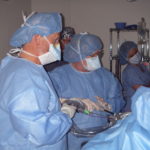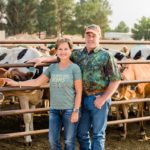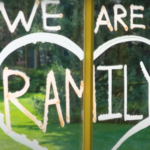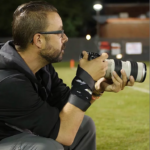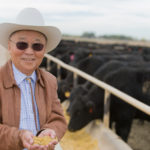By Angela Hayes, Ph.D.
As you head into a new year, you’ll often hear others talking about their New Year’s resolutions. You probably have a few yourself. Resolutions are a wonderful way to help you think through what you really want and focus your energies to achieve it. However, 80% of those who make New Year’s resolutions will have stopped working toward those goals by the second week in February. Only 8% of people will have actually achieved their resolutions by the end of this year. That’s the bad news. The good news is, changing that is absolutely within your control. Two researchers at Harvard, Robert Kegan and Lisa Lahey, have spent nearly 30 years studying the reasons that we tend to fall short of our goals and have given us brilliant solutions for reversing the natural human tendencies that cause it. Their book is called Immunity to Change. Using their approach creates a customized picture of the way our current mindset (something that’s often hidden from our awareness) works against the changes we would like to make. Once you can see the source of what has been preventing change, their approach guides you on a new path to achieve your goals.
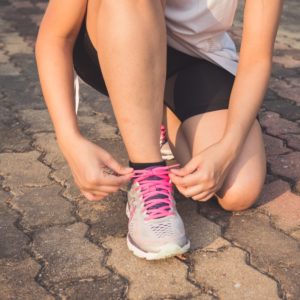 You start with what they call an Immunity to Change X-ray. There are six columns in the X-ray. In the first column, you write down one or two improvement goals that you can commit to. Pick one for the purposes of the first time through the exercise. Then, in the second column, write down all of the things that you are doing and/or not doing, that work against the achievement of that goal. You might be surprised at what you see, but please don’t stop there. Working against our goals is a normal human tendency. Kegan and Lahey call it “having one foot on the gas and one foot on the brake”. Getting a good look at our behaviors is the first step in changing that pattern. In the third column, you would go line by line from the second column and imagine what it would be like to do the exact opposite of what you see in that second column. Write down your reactions to the idea of doing the opposite of these things. For most people, this creates a set of very uncomfortable feelings. If it does, you know that you are making good progress.
You start with what they call an Immunity to Change X-ray. There are six columns in the X-ray. In the first column, you write down one or two improvement goals that you can commit to. Pick one for the purposes of the first time through the exercise. Then, in the second column, write down all of the things that you are doing and/or not doing, that work against the achievement of that goal. You might be surprised at what you see, but please don’t stop there. Working against our goals is a normal human tendency. Kegan and Lahey call it “having one foot on the gas and one foot on the brake”. Getting a good look at our behaviors is the first step in changing that pattern. In the third column, you would go line by line from the second column and imagine what it would be like to do the exact opposite of what you see in that second column. Write down your reactions to the idea of doing the opposite of these things. For most people, this creates a set of very uncomfortable feelings. If it does, you know that you are making good progress.
You write down these uncomfortable feelings in what the authors call a “worry box” at the top of the third column. People will often find that they have a strong commitment to not letting those things in the worry box happen. Common themes in the worry box are fear of letting others down, fear of being seen as incompetent, fear of failure, and so on. Under the worry box, you then write down your hidden, competing commitments. It could be a commitment to not letting others down, commitment to always appear competent, commitment to avoid failure, etc. This is your stuck point; your hidden immunity to change. If you’ve gotten to this point, you’ve made excellent progress. In the next column, you write down the “Big Assumption” that you must have in order to keep all those commitments you’ve listed in the bottom of the last column. The “Big Assumption” (often a collection of assumptions) is something that you are apparently taking as the absolute truth. The big assumptions sustain and anchor the immune system. In that fourth column you would write down your assumptions in the following form “I assume that if I _______________ then _______________. In the last column, you would create a test of one or more of your big assumptions. It’s good to use SMART criteria for testing assumptions. This stands for Safe, Modest, Actionable, Researcher’s stance; Tests the Big Assumption.
Please contact me if you would like more in depth, step-by-step information about how to create your Immunity to Change X-Ray. You might also be interested in the free Immunity to Change workshops for alumni that I’ll be presenting during the Spring semester. I’ll be presenting this hands-on workshop on February 5, 2019, at the Iris & Michael Smith Alumni Center in Fort Collins from 5:30-8:30 p.m. and at our Denver facility on March 26, from 5:30-8:30 p.m.

ANGELA HAYES serves as the Associate Director of Alumni and Online Career Engagement. Prior to coming to CSU, she worked as the Assistant Director of Alumni and Graduate Student Career Services at Kansas State University. She has a B.S. in psychology, an M.S. in industrial/organizational psychology and a Ph.D. in professional coaching and human development. She’s a nationally Board Certified Coach and a nationally Certified Health and Wellness Coach.
She has a passion for helping others to see their lives as full of possibilities and un-tapped potential. She views changes/transitions (both planned and unplanned) as opportunities for individuals to discover and plan out what they really want from their careers and lives.




































